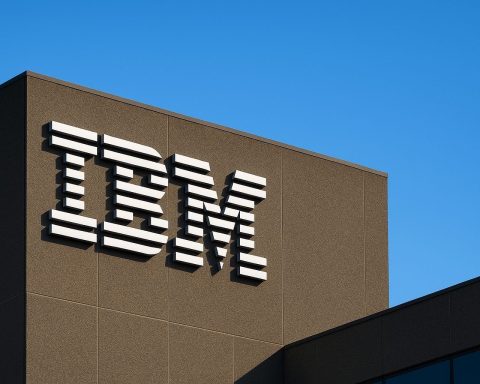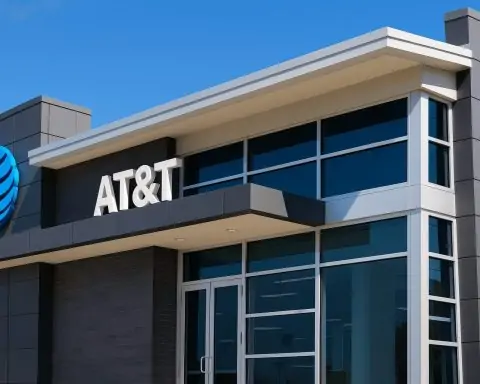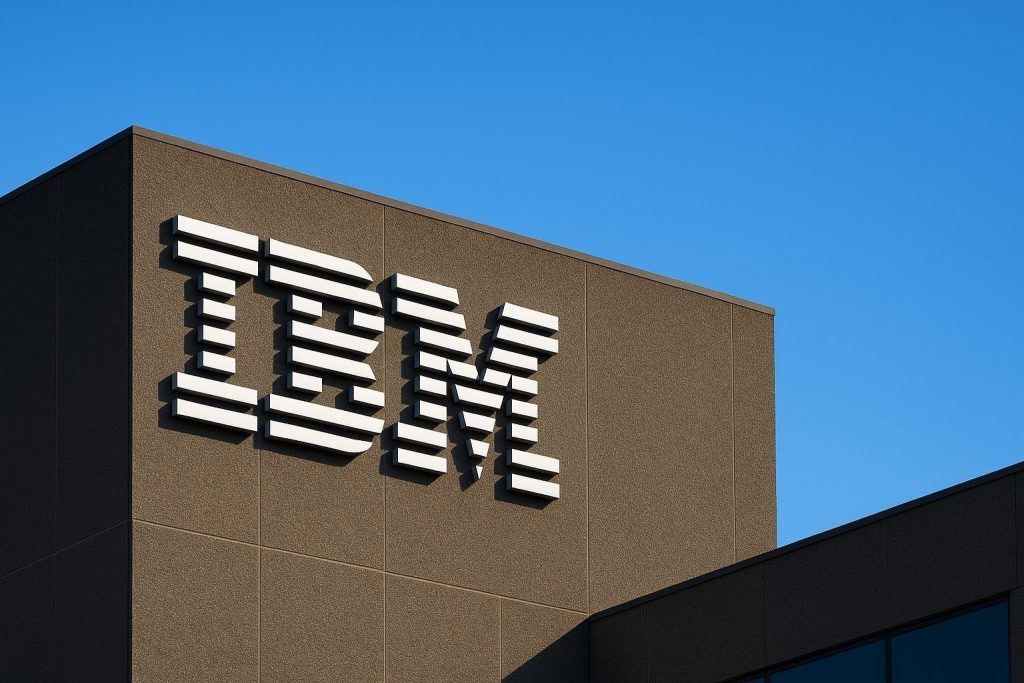United Parcel Service (NYSE: UPS) heads into the weekend trading just under $95 a share after a sharp late‑week rally, as investors weigh a nearly 7% dividend yield against aggressive job cuts, a major network overhaul and a strategic pivot away from lower‑margin Amazon volume.
As of the close on Friday, November 21, 2025, UPS stock finished around $94.6, up about 4% on the day after touching an intraday high of $96.22 on elevated volume. [1] The move extends a rebound of roughly 13% off recent lows but still leaves the shares down more than 20% year‑to‑date, badly lagging the broader S&P 500, which is up in the mid‑teens in 2025. [2]
Below is a detailed look at what’s driving UPS stock right now and what investors are watching as we head toward the company’s Q4 earnings in early 2026.
Key facts about UPS stock today
- Ticker: UPS (NYSE)
- Price (Nov 21 close): ~$94.66
- Market cap: ~$80 billion [3]
- Trailing P/E: ~14.6 [4]
- Annualized dividend: $6.56 per share ($1.64 quarterly) [5]
- Dividend yield at current price: ≈ 6.9%–7.0%
- Analyst consensus: Overall “Hold” rating, with an average 12‑month price target of $110. [6]
UPS stock price action: relief rally after a “brutal” year
Friday’s 4% jump capped a strong week for UPS shares, which have been trying to claw back from what one recent analyst note described as a “brutal year” for the delivery giant. [7]
According to MarketBeat, UPS traded as high as $96.22 intraday on November 21, with volume nearly 9 million shares — roughly 28% above its average daily volume — before settling just under $95. [8] The move followed a series of bullish write‑ups highlighting:
- A beaten‑down share price (down about 21% in 2025),
- A dividend yield near 7%, among the highest in the S&P 500,
- And early signs that UPS’s turnaround plan is beginning to improve profitability. [9]
Even after the recent bounce, UPS still trades at a discount to the broader market and to close rival FedEx on several valuation metrics. TipRanks, for example, estimates UPS at roughly 13.5× 2025 earnings, versus about 22× for the S&P 500 and ~14.5× for FedEx. [10]
Q3 2025 earnings: beat on profit, miss on growth
The near‑term story for UPS stock is anchored in its Q3 2025 results, released on October 28.
Headline numbers
- Q3 2025 revenue: $21.4 billion
- Non‑GAAP adjusted operating profit: $2.1 billion
- Q3 operating cash flow (year‑to‑date): $5.1 billion [11]
- Adjusted EPS: $1.74 vs. Wall Street consensus around $1.30–$1.31
- GAAP EPS: ~$1.55
- Revenue change: down about 3.7% year‑over‑year to $21.42 billion. [12]
In other words, UPS beat earnings expectations by a wide margin, even as top‑line revenue continued to shrink.
Management and analysts have highlighted several important operational trends:
- Revenue per piece (essentially, pricing power) jumped about 9.8%, helping to offset weaker volumes. [13]
- Consolidated operating margin improved to around 10% on an adjusted basis, with international operations particularly strong. [14]
- Domestic volume fell double digits, and supply chain and freight revenue dropped more than 20%, reflecting softer freight demand and the ongoing reset of UPS’s business with Amazon. [15]
UPS is guiding for around $24 billion in Q4 revenue and total 2025 cost savings of $3.5 billion as its restructuring efforts ramp up. [16]
The turnaround plan: 48,000 job cuts and a network shake‑up
The biggest – and most controversial – driver behind UPS’s improved margins is a sweeping cost‑cut program.
Massive workforce reductions
- UPS has cut approximately 48,000 jobs in 2025 so far, including about 34,000 operational roles and 14,000 management positions. [17]
- The company has also closed daily operations at 93 buildings, consolidating its U.S. network as part of its “Network of the Future” and “Efficiency Reimagined” initiatives. [18]
By September 30, UPS estimated $2.2 billion in cost savings year‑to‑date from these actions and expects $3.5 billion in total savings for 2025 alone. [19]
Management frames this as a once‑in‑a‑generation reconfiguration of the UPS network, designed to:
- Take out low‑margin business,
- Align capacity with a post‑pandemic e‑commerce reality,
- And make room to focus on higher‑value segments like healthcare logistics and premium international services.
Pivot away from Amazon
A cornerstone of that pivot is UPS’s evolving relationship with Amazon:
- UPS agreed earlier this year to cut Amazon‑related shipments by more than 50% by late 2026, leaning away from high‑volume, low‑margin traffic. [20]
- In Q3, Amazon‑related volume was already down more than 20% year‑over‑year, according to analysts, reflecting a deliberate “glide‑down” in that business. [21]
The move pressures short‑term revenue but improves revenue per package and margin mix, a key reason why investors have reacted positively to recent earnings surprises.
Labor and contract backdrop
All of this is unfolding under a five‑year national contract with the Teamsters, ratified in 2023 and running through July 31, 2028. [22]
That agreement locked in wage gains and safety commitments – including requirements to deploy thousands of air‑conditioned delivery vehicles. UPS and the union recently agreed to accelerate the rollout, with UPS pledging to retrofit 5,000 trucks with air conditioning in the hottest U.S. regions and to complete the first 2,000 upgrades by mid‑2026. [23]
While these investments support worker safety, they also add to capital and operating costs, underscoring the delicate balance UPS is trying to strike between cost cutting and labor relations.
Strategic pivot: healthcare and complex logistics
UPS isn’t just cutting. It’s also re‑mixing its business toward higher‑margin, stickier verticals.
Andlauer Healthcare Group acquisition
On November 3, UPS announced it had completed the acquisition of Andlauer Healthcare Group Inc. (TSX: AND), a Canadian‑based specialist in healthcare logistics and cold‑chain transport. Key terms: [24]
- Purchase price: CAD $2.2 billion (USD $1.6 billion)
- Consideration: CAD $55 per share in cash
- Strategic aim: expand UPS Healthcare’s cold‑chain and pharma capabilities across North America and globally.
With Andlauer’s network, UPS says healthcare customers should see:
- Shorter transit times,
- Better end‑to‑end visibility,
- Deeper global reach,
- And stronger quality assurance for temperature‑sensitive treatments. [25]
This push builds on UPS’s broader healthcare strategy, which management has repeatedly called one of its highest‑priority growth engines.
The dividend: nearly 7% yield, but sustainability questions
For many investors, the dividend is the main attraction in UPS stock right now.
Current payout
On November 6, UPS’s board declared a regular quarterly dividend of $1.64 per share on all outstanding Class A and B shares. The dividend is payable December 4, 2025 to shareholders of record on November 17, 2025. [26]
At the current share price around $94–95, the annualized payout of $6.56 equates to a yield of roughly 6.9%, among the highest in the S&P 500. [27]
UPS has a long history of rewarding investors:
- It has paid a dividend every year since going public in 1999,
- And has raised the payout for 17 consecutive years, making it a long‑standing favorite among income‑focused investors. [28]
Year‑to‑date in 2025, UPS has returned about $4 billion to shareholders via dividends and another $1 billion through share buybacks, according to TipRanks. [29]
The catch: payout ratio above 100%
The flip side is that UPS is currently paying out more than 100% of its earnings as dividends:
- MarketBeat pegs UPS’s dividend payout ratio at around 101%,
- Simply Wall St similarly shows a payout ratio just above 100%. [30]
That’s unusually high and raises legitimate questions about sustainability if earnings don’t grow from here. Management has reiterated its commitment to the dividend, but the math suggests the company is leaning heavily on cash flow and balance‑sheet flexibility to support such a large distribution.
For now, the market seems comfortable with that risk — especially given improving margins and a clear cost‑reduction roadmap — but any disappointment on earnings or cash generation could quickly refocus attention on the dividend’s durability.
What Wall Street thinks about UPS stock now
Analyst opinion on UPS is mixed but stabilizing.
Consensus rating and price targets
MarketBeat data shows: [31]
- 30 analysts currently cover UPS.
- Ratings breakdown: 4 Sell, 16 Hold, 9 Buy, 1 Strong Buy.
- The average 12‑month price target is $110, implying roughly 16% upside from Friday’s closing level.
Other platforms, like TipRanks, show a “Moderate Buy” consensus based on a smaller sample (9 Buys, 8 Holds, 3 Sells) with an average price target around $103.40 — about 10% upside from current levels. [32]
In short, few analysts see UPS as a disaster, but many are waiting to see more proof that the turnaround and strategic pivot can translate into durable earnings growth.
Valuation versus peers
Based on recent data:
- UPS trades at around 14–15× trailing earnings and roughly 12–13× forward earnings, depending on the estimate set. [33]
- That’s cheaper than the S&P 500 (low‑20s forward P/E) and modestly below FedEx’s multiple. [34]
The valuation discount, combined with the elevated dividend yield, is central to the bullish thesis: if UPS can stabilize revenue and grow earnings off this reset base, investors could be paid generously to wait.
Key risks investors are watching
Despite Friday’s rally, UPS stock is not without real risks. Some of the biggest:
1. Execution risk on restructuring
Cutting 48,000 jobs and closing nearly 100 facilities in a single year is disruptive by definition. [35]
If network consolidation goes too far, UPS could face:
- Service issues in key markets,
- Loss of high‑value customers to rivals,
- Or higher long‑term costs if it has to rebuild capacity later.
2. Labor relations and contract compliance
The 2023–2028 Teamsters contract has already produced flashpoints, including disputes over staffing commitments and the pace of air‑conditioned vehicle deployment. [36]
Any perception that UPS is not living up to the agreement could:
- Spark grievances, public campaigns, or even localized disruptions,
- Add legal or regulatory scrutiny,
- And pressure margins if concessions are required.
3. Amazon and e‑commerce dynamics
UPS’s decision to deliberately shrink its Amazon business improves margins but reduces volume and revenue. [37]
If:
- E‑commerce growth slows, and
- Non‑Amazon customers don’t fully backfill that volume at higher margins,
then the revenue hit could outweigh the profitability benefits.
4. Macro and trade headwinds
UPS operates in more than 200 countries and depends on global trade flows. Management has highlighted what it calls “the most profound shift in trade policy in a century,” with tariffs, geopolitical tensions and supply‑chain rerouting reshaping freight patterns. [38]
A weaker global economy or further trade fragmentation could limit package growth just as UPS is investing heavily in its new network and healthcare capabilities.
5. Dividend risk
Finally, the elevated payout ratio means the dividend is partly a confidence game. If investors begin to doubt its sustainability — for example, after a couple of weaker quarters — UPS’s yield could go from being a support to a point of vulnerability.
Catalysts to watch into 2026
Looking beyond this week’s price action, several potential catalysts stand out:
- Q4 2025 earnings (Jan 27, 2026)
UPS’s next scheduled earnings call is on January 27, 2026, and will give investors a look at peak‑season performance, updated guidance and progress toward that $3.5 billion savings goal. [39] - Integration of Andlauer Healthcare Group
Investors will be watching how quickly the Andlauer deal contributes to revenue, margins and cross‑selling in UPS Healthcare. [40] - Amazon volume glide‑down
Quarterly disclosures and commentary on Amazon‑related volumes will help gauge whether UPS is successfully replacing that business with higher‑margin freight. [41] - Dividend signals
Any change in dividend policy, even subtle language shifts, will be closely scrutinized given the current ~7% yield and triple‑digit payout ratio. [42]
Bottom line: value opportunity or value trap?
As of November 22, 2025, UPS stock is a classic high‑yield turnaround story:
- Pros:
- Near‑7% dividend yield,
- Discounted valuation versus the market and peers,
- Clear cost‑reduction roadmap,
- Strategic push into higher‑margin healthcare logistics,
- Early signs of margin improvement despite weak volumes.
- Cons:
- Revenue still shrinking,
- Heavy reliance on job cuts and facility closures,
- Elevated labor and execution risk,
- A dividend paying out more than current earnings,
- Ongoing macro and trade uncertainty.
For income‑oriented investors who believe in UPS’s ability to execute its network redesign and unlock growth in healthcare and premium international segments, the current price may look appealing. For more cautious investors, the combination of structural change, labor complexity and a stretched payout ratio may justify staying on the sidelines until there is clearer evidence of sustainable earnings growth.
Either way, UPS is likely to remain a closely watched stock into 2026, as the market decides whether this deep‑yielding logistics giant is a long‑term opportunity — or simply a high‑risk value trap in disguise.
This article is for informational purposes only and does not constitute financial or investment advice. Always do your own research or consult a licensed financial professional before making investment decisions.
References
1. www.marketbeat.com, 2. www.tipranks.com, 3. www.marketbeat.com, 4. www.marketbeat.com, 5. investors.ups.com, 6. www.marketbeat.com, 7. www.tipranks.com, 8. www.marketbeat.com, 9. www.tipranks.com, 10. www.tipranks.com, 11. investors.ups.com, 12. www.marketbeat.com, 13. www.tipranks.com, 14. www.tipranks.com, 15. www.marketwatch.com, 16. www.marketwatch.com, 17. apnews.com, 18. about.ups.com, 19. about.ups.com, 20. apnews.com, 21. www.tipranks.com, 22. teamster.org, 23. www.reuters.com, 24. about.ups.com, 25. about.ups.com, 26. investors.ups.com, 27. www.marketbeat.com, 28. www.tipranks.com, 29. www.tipranks.com, 30. www.marketbeat.com, 31. www.marketbeat.com, 32. www.tipranks.com, 33. www.marketbeat.com, 34. www.tipranks.com, 35. apnews.com, 36. teamster.org, 37. apnews.com, 38. about.ups.com, 39. investors.ups.com, 40. about.ups.com, 41. apnews.com, 42. investors.ups.com







